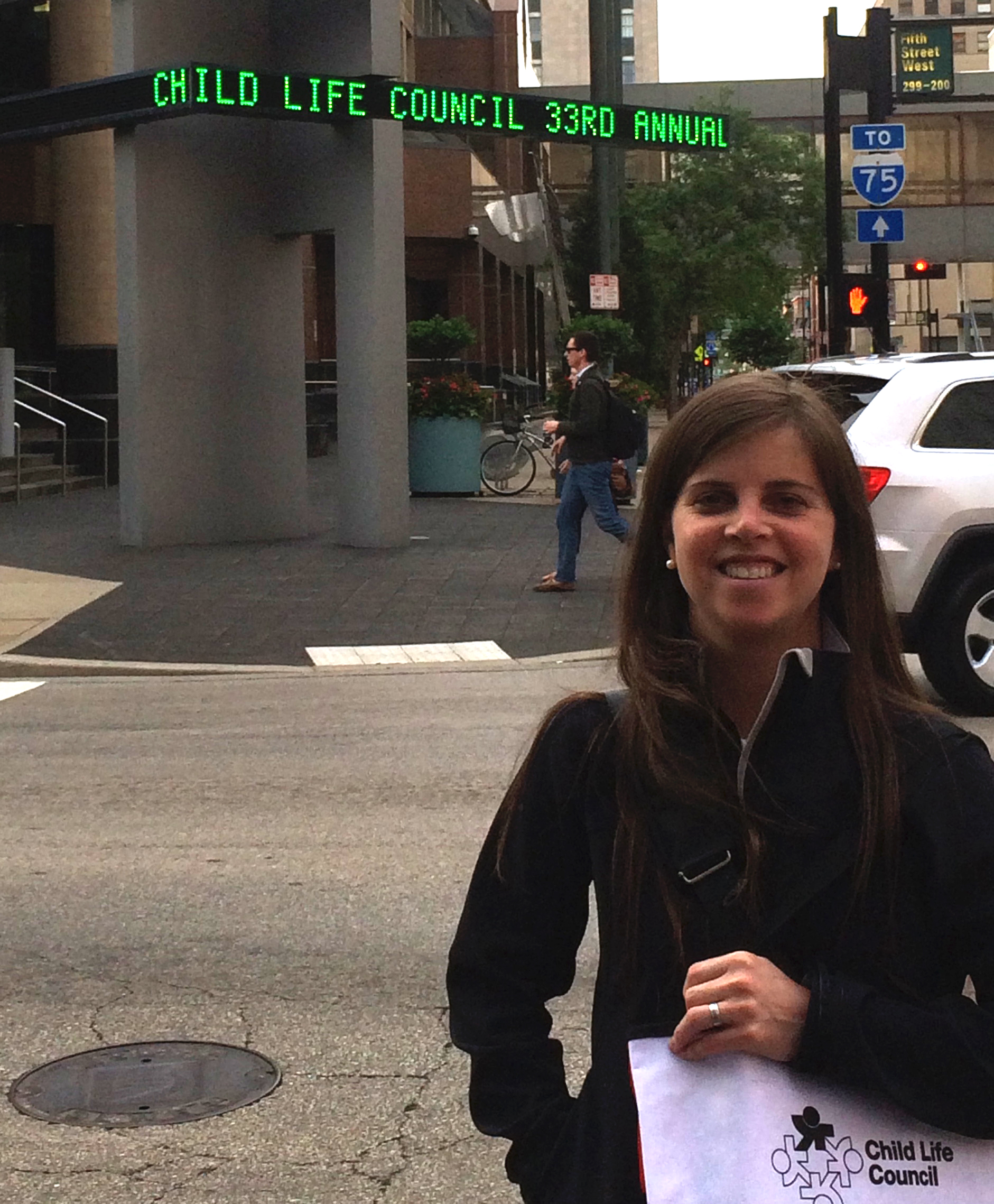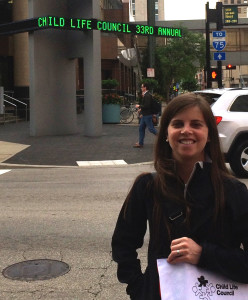3/15/2016
·Enable high contrast reading
A Child-Life Specialist

In my work, I walk into rooms where children, babies, and teens are sick. Sometimes a child’s hospitalization is quick, but sometimes I walk into a room already recognizing the depth of a child’s illness. This 4 year old girl with leukemia and her family will never be the same. My goal is to assess the child’s ability to cope. I wonder if she will be comfortable enough to even look at me. If I sit down at her level, will she play or will she continue to hang tight onto her mother?
Relationships with children require a lot of trust, especially when the children feel vulnerable or scared. My goal is to be a safe person among the strangers in the hospital. I come with toys and I come with information. I offer information to help this strange place feel less intimidating. We play playdoh or house. Usually, after a few visits, I have gained her trust.
Through education and support, my job is to help a child’s time in the hospital go as smoothly as possible. Often I ask, “So can you tell me why you are here?” I hear their perspective: “Because I am sick.” “I don’t know.” “I am getting a cat scan? But I don’t have a cat?” “My brother is here.”
I tell the truth but use small bits of information, breaking it down to make it easier for children to understand: “You are here because your blood is sick. We call it leukemia. The nurses are going to give you medicine to make the leukemia go away. It’s called chemotherapy.”
I use the actual medical words because they don’t know these words yet, and I can create the meaning for them. I want kids to learn these words in a way that is not intimidating. Sometimes we even make “blood soup” to help them better understand. (Red blood cells = Hot tamales; white blood cells = marshmallows; plasma = oil; platelets = rice.)
A new diagnosis can be confusing and alienating for siblings. I work with siblings to demystify the hospital. I bring together the bits of information they know and help them make sense of it. I help them feel connected to their brother or sister who is sick and I help them connect with their parents, who are utterly overwhelmed.
I have dolls to teach children about the medical equipment. A boy with a chronic lung disease is afraid of needle pokes. During his time in the hospital he will have many IVs (a small tube that goes into a vein so you can get medicine). I give him a blank doll. He draws a face. He listens to its “heart” with a stethoscope. He practices the less intimidating aspects of being a patient on his doll first, and then together we practice placing an IV. We practice this over and over during his time in the hospital. He goes home. The next time he comes into the hospital, he is so excited: “Last night I had to get an IV in the emergency room and I did not cry at all.” He is mastering his fear. I am so proud of him even though I know it’s okay to cry.
A boy needs a dressing change. He has them every day, but dressing changes are still painful and exhausting. Staff calls for me to help distract him during this procedure, but I know better. This is a kid who needs and wants to help. He wants to participate. “I know it can take a long time but he can do it.” As a child life specialist, my job during a procedure is to know when to blow bubbles to distract from an IV poke, when to support a parent comforting their child, and when to advocate for the child who likes to watch. “It’s okay if he watches; his only job is to hold his arm still.” I give choices where there are choices. I don’t make a promise I can’t keep. I want this child to trust us.
Then there are the really hard days. The painful days. The days when a child is dying or has died. Some of these families are new to me, but some I have known for months or years, and I grieve too.
I am honored to be at the bedside of a child who has died. A family has let me into the most difficult space imaginable. I sit with the family and help to create opportunities for rituals and memory making that the family can take with them after the child is gone. Sometimes we make handprints. Sometimes we preserve a lock of hair. I help explain to siblings what is happening. I say the most difficult thing: “Your brother has died. His body does not work anymore. He can not eat or sleep or talk.”
I use the words died and dead because otherwise children may get confused. These words can be very painful for family members to say and hear. And children often need to hear it over and over just to understand. Books can help support the message of finality and universality of death.
In order for children to cope with the pain of death of a loved one, children play to feel normal and to relieve the intensity of their emotions. So sometimes we play.
In the Pediatric Intensive Care Unit where I work a quote on the wall reads,
“You are
STRONGER
than you seem,
BRAVER
than you believe, and
SMARTER
than you think you are.”
~ Christopher Robin – Winnie the Pooh – A.A. Milne
I love my job. It is a joy to witness the love families share. I see strength in children and parents that they did not realize they had. Every day, I observe successes small and large: a teen with an amputated leg walks for the first time, an eight year old boy beats me at dominos (and laughs as he talks a lot of smack about it) and a child smiles when I walk in the room because they know I am a safe person who is here to help.



